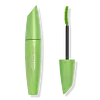What's inside
What's inside
 Key Ingredients
Key Ingredients

 Benefits
Benefits

 Concerns
Concerns

 Ingredients Side-by-side
Ingredients Side-by-side

Water
Skin ConditioningAcrylates Copolymer
Glyceryl Stearate
EmollientDisteardimonium Hectorite
StabilisingStearic Acid
CleansingCopernicia Cerifera Wax
Propylene Glycol
HumectantTriethanolamine
BufferingPolyethylene
AbrasiveLecithin
EmollientPropylene Carbonate
SolventPolyvinyl Alcohol
Synthetic Wax
AbrasiveOleic Acid
EmollientAlcohol Denat.
AntimicrobialBenzyl Alcohol
PerfumingPanthenol
Skin ConditioningPhenoxyethanol
PreservativeMethylparaben
PreservativeGlycerin
HumectantEthylparaben
PreservativePropylparaben
PreservativeAscorbyl Palmitate
AntioxidantXanthan Gum
EmulsifyingTocopherol
AntioxidantTrisodium EDTA
Simethicone
EmollientTocopheryl Acetate
AntioxidantMethylcellulose
Emulsion StabilisingIron Oxides
Ultramarines
Titanium Dioxide
Cosmetic ColorantWater, Acrylates Copolymer, Glyceryl Stearate, Disteardimonium Hectorite, Stearic Acid, Copernicia Cerifera Wax, Propylene Glycol, Triethanolamine, Polyethylene, Lecithin, Propylene Carbonate, Polyvinyl Alcohol, Synthetic Wax, Oleic Acid, Alcohol Denat., Benzyl Alcohol, Panthenol, Phenoxyethanol, Methylparaben, Glycerin, Ethylparaben, Propylparaben, Ascorbyl Palmitate, Xanthan Gum, Tocopherol, Trisodium EDTA, Simethicone, Tocopheryl Acetate, Methylcellulose, Iron Oxides, Ultramarines, Titanium Dioxide
Water
Skin ConditioningSynthetic Beeswax
Emulsion StabilisingParaffin
PerfumingGlyceryl Stearate
EmollientAcacia Senegal Gum
MaskingButylene Glycol
HumectantOryza Sativa Bran Wax
Skin ConditioningStearic Acid
CleansingPalmitic Acid
EmollientPolybutene
Vp/Eicosene Copolymer
Copernicia Cerifera Wax
Aminomethyl Propanol
BufferingGlycerin
HumectantPvp
Emulsion StabilisingEthylhexylglycerin
Skin ConditioningHydroxyethylcellulose
Emulsion StabilisingDisodium EDTA
Polyester-11
Skin ConditioningCellulose
AbsorbentTrimethylpentanediol/Adipic Acid/Glycerin Crosspolymer
Skin ConditioningPropylene Glycol
HumectantDisodium Phosphate
BufferingPolysorbate 60
EmulsifyingAcacia Seyal Gum Extract
HumectantSodium Phosphate
BufferingAcetyl Hexapeptide-1
Skin ConditioningDextran
Phenoxyethanol
PreservativePotassium Sorbate
PreservativeCI 77499
Cosmetic ColorantCI 77007
Cosmetic ColorantCI 77266
Water, Synthetic Beeswax, Paraffin, Glyceryl Stearate, Acacia Senegal Gum, Butylene Glycol, Oryza Sativa Bran Wax, Stearic Acid, Palmitic Acid, Polybutene, Vp/Eicosene Copolymer, Copernicia Cerifera Wax, Aminomethyl Propanol, Glycerin, Pvp, Ethylhexylglycerin, Hydroxyethylcellulose, Disodium EDTA, Polyester-11, Cellulose, Trimethylpentanediol/Adipic Acid/Glycerin Crosspolymer, Propylene Glycol, Disodium Phosphate, Polysorbate 60, Acacia Seyal Gum Extract, Sodium Phosphate, Acetyl Hexapeptide-1, Dextran, Phenoxyethanol, Potassium Sorbate, CI 77499, CI 77007, CI 77266
 Reviews
Reviews

Ingredients Explained
These ingredients are found in both products.
Ingredients higher up in an ingredient list are typically present in a larger amount.
Copernicia Cerifera Wax comes from a palm tree native to Brazil; another name for this ingredient is Carnauba Wax.
This ingredient is used to thicken texture and also leaves behind a film when applied.
Fun fact: This wax has the highest melting point of all natural waxes and low solubility.
Learn more about Copernicia Cerifera WaxGlycerin is already naturally found in your skin. It helps moisturize and protect your skin.
A study from 2016 found glycerin to be more effective as a humectant than AHAs and hyaluronic acid.
As a humectant, it helps the skin stay hydrated by pulling moisture to your skin. The low molecular weight of glycerin allows it to pull moisture into the deeper layers of your skin.
Hydrated skin improves your skin barrier; Your skin barrier helps protect against irritants and bacteria.
Glycerin has also been found to have antimicrobial and antiviral properties. Due to these properties, glycerin is often used in wound and burn treatments.
In cosmetics, glycerin is usually derived from plants such as soybean or palm. However, it can also be sourced from animals, such as tallow or animal fat.
This ingredient is organic, colorless, odorless, and non-toxic.
Glycerin is the name for this ingredient in American English. British English uses Glycerol/Glycerine.
Learn more about GlycerinGlyceryl Stearate is a mix of glycerin and stearic acid.
It is used to stabilize the mixing of water and oil ingredients. By preventing these ingredients from separating, it can help elongate shelf life. It can also help thicken the product's texture.
As an emollient, it helps soften skin and supports barrier-replenishing ingredients.
In cosmetics, Glyceryl Stearate is often made from vegetable oils or synthetically produced.
This ingredient may not be fungal-acne safe
Fun fact: The human body also creates Glyceryl Stearate naturally.
Learn more about Glyceryl StearatePhenoxyethanol is a preservative that has germicide, antimicrobial, and aromatic properties. Studies show that phenoxyethanol can prevent microbial growth. By itself, it has a scent that is similar to that of a rose.
It's often used in formulations along with Caprylyl Glycol to preserve the shelf life of products.
Propylene Glycol is an odorless, colorless liquid. As a humectant, it helps skin retain moisture. It also aids in delivering active ingredients.
Another role of this ingredient is preventing a product from melting or freezing. Propylene glycol also adds antimicrobrial properties to a product, elongating product lifespan.
This ingredient is considered an organic alcohol and commonly added into both cosmetics and foods.
Those with sensitive skin or conditions may develop a rash when using this ingredient.
Learn more about Propylene GlycolStearic Acid is a fatty acid. It is an emollient, emulsifier, and texture enhancer.
As an emollient, stearic acid helps soften skin. It aids the skin's protective barrier by preventing water loss. It also provides a gentle cleansing effect without stripping away natural oils.
Stearic acid may also be used to enhance the texture of products. It can add volume and stabilize ingredients such as water and oil. This can help water and oil ingredients from separating.
Sources of stearic acid include animal or vegetable fats/oils such as coconut or shea. It can be naturally found in butter, cocoa butter, shea butter, vegetable fats, and animal tallow.
This ingredient may not be Malassezia folliculitis, or fungal-acne safe.
Learn more about Stearic AcidWater. It's the most common cosmetic ingredient of all. You'll usually see it at the top of ingredient lists, meaning that it makes up the largest part of the product.
So why is it so popular? Water most often acts as a solvent - this means that it helps dissolve other ingredients into the formulation.
You'll also recognize water as that liquid we all need to stay alive. If you see this, drink a glass of water. Stay hydrated!
Learn more about Water